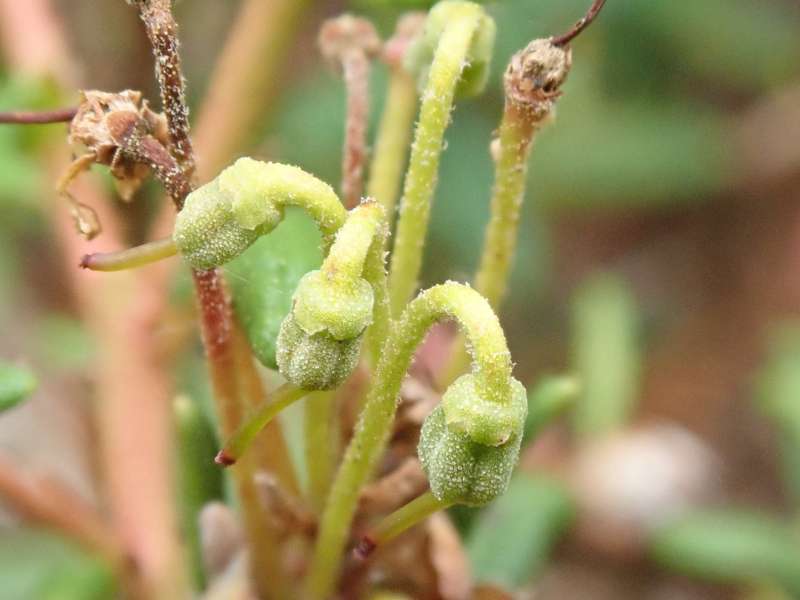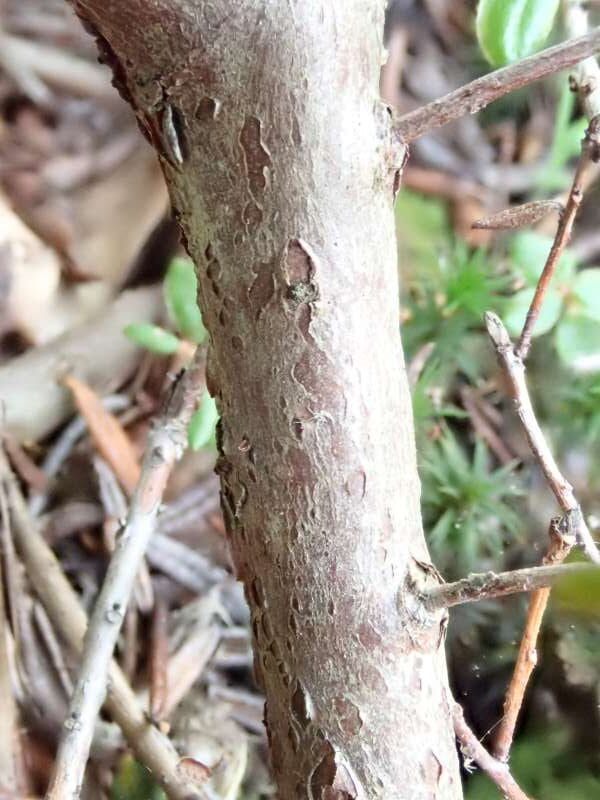Rhododendron subarcticum
Billeder af Rhododendron subarcticum
Beskrivelse
R. subarcticum (Ledum) (-45 °C.). Lav krybende busk til 30 cm. Vokser på enge og fjeldsider i kystnære områder i V-Grønland fra 0 m og opefter. Desuden vokser den i N-Amerika, N- Asien i de arktiske områder.
Hans Eiberg
R. subarcticum (syn. tomentosum ssp. subarcticum, Ledum palustre ssp. decumbens), kendt som “Marsh Labrador tea”, “northern Labrador tea” eller “wild rosemary” fra Yellowknife, Canada.
Ikke i ARS
RBGE Herbarium; R. tomentosum
Kristian Theqvist,
Flora of North America
R. tomentosum Harmaja, Ann. Bot. Fenn. 27: 204. 1990.
Labrador or trappers tea
Ledum palustre Linnaeus, Sp. Pl. 1: 391. 1753, not Rhododendron palustre Turczaninow 1838; L. decumbens (Aiton) Loddiges ex Steudel; L. palustre subsp. decumbens (Aiton) Hultén; R. subarcticum Harmaja; R. tolmachevii Harmaja; R. tomentosum subsp. decumbens (Aiton) Elven & D. F. Murray; R. tomentosum subsp. subarcticum (Harmaja) G. D. Wallace
Shrubs, to 0.5 m, rhizomatous. Stems creeping or prostrate; bark ± smooth; twigs unicellular-hairy and with flattened, glandular scales, scales often obscured by dense, ferruginous, long-crisped, multicellular hairs. Leaves persistent, (fragrant when crushed); petiole with unicellular and/or peltate scales and, sometimes, ferruginous, long-crisped hairs; blade ± linear, 2-5 × 1-4 cm (often much longer than wide), coriaceous, margins entire, revolute, glabrous, apex acute, abaxial surface with sparse to dense, glandular-peltate scales without broad rim, scales often obscured by dense (to sparse), ferruginous, long-crisped, multicellular hairs sometimes forming dense, ± uniform mat, adaxial surface rugose with scattered, lepidote scales and sometimes also with white, unicellular hairs along impressed midrib, midrib usually lanate.
Floral bud scales with lepidote scales and unicellular-hairy abaxially, margins unicellular-hairy. Inflorescences slightly rounded, 10-35-flowered; bracts lepidote abaxially, margins ciliate, long-crisped-hairy, sometimes also unicellular-hairy. Pedicels 5-26 mm, sparsely eglandular-hairy (hairs ferruginous, elongated), with ferruginous, long-crisped, unicellular and/or peltate scales, sometimes also long-stalked, multicellular glandular-hairy.
Flowers radially symmetric, opening after leaves (of flowering shoots), ± erect, not fragrant; calyx lobes ca. 1 mm, outer surface densely to sparsely unicellular-hairy (hairs tan), and multicellular, stipitate-glandular-hairy (hairs red) on margins; corolla white to cream, without blotch, ± rotate, 2-8 mm, inner surface often densely unicellular-hairy, petals appearing distinct or only slightly connate basally, lobes 5-7 mm; stamens 10, exserted, ± equal, 4.4-8.5 mm. Capsules borne on apex of sharply recurved pedicels, 2.5-5 × 1-3 mm (only slightly longer than wide), with sparse to dense, lepidote scales, acropetally dehiscent. Seeds somewhat elongated beyond narrow ends; testa closely appressed. 2n = 26, 52.
Flowering spring-summer. Bogs, muskeg, tundra, raised beach ridges; 0-1800 m; Greenland; Alta., B.C., Man., Nfld. and Labr. (Nfld.), N.W.T., Nunavut, Ont., Que., Sask., Yukon; Alaska; Europe; Asia.







